Cestování s lyžemi může být otravné – objemné tašky, vysoké poplatky za zavazadla a omezený prostor na balení. Ale existuje lepší způsob. Kompaktní lyžařské vybavení, jako jsou Snowfeet Mini Ski Skates (15 palců) nebo Short Skis (47 palců), usnadňuje balení a cestování. Tyto menší, lehké možnosti se vejdou do běžného zavazadla, čímž vám ušetří peníze za poplatky za nadměrná zavazadla a místo ve vašem autě. Navíc fungují s většinou bot, které už vlastníte, takže není potřeba žádné další vybavení.
Hlavní body:
- Úspora místa: Vybavení Snowfeet je mnohem menší než běžné lyže (15–47 palců vs. 63–75 palců).
- Šetrné k rozpočtu: Vejde se do standardního zavazadla, čímž se vyhnete poplatkům za nadměrná zavazadla.
- Praktické: Funguje s zimními botami, turistickými botami nebo lyžařskými botami.
- Tipy na balení: Používejte kompresní kostky, polstrované návleky a tvrdý kufr, abyste zůstali organizovaní a ochránili své vybavení.
Chcete bezstresové lyžařské výlety? Vybavení Snowfeet je průlomové pro lehké a snadné cestování.
Jak zabalit lyžařské vybavení na leteckou dopravu
Proč produkty Snowfeet* fungují nejlépe na cestách
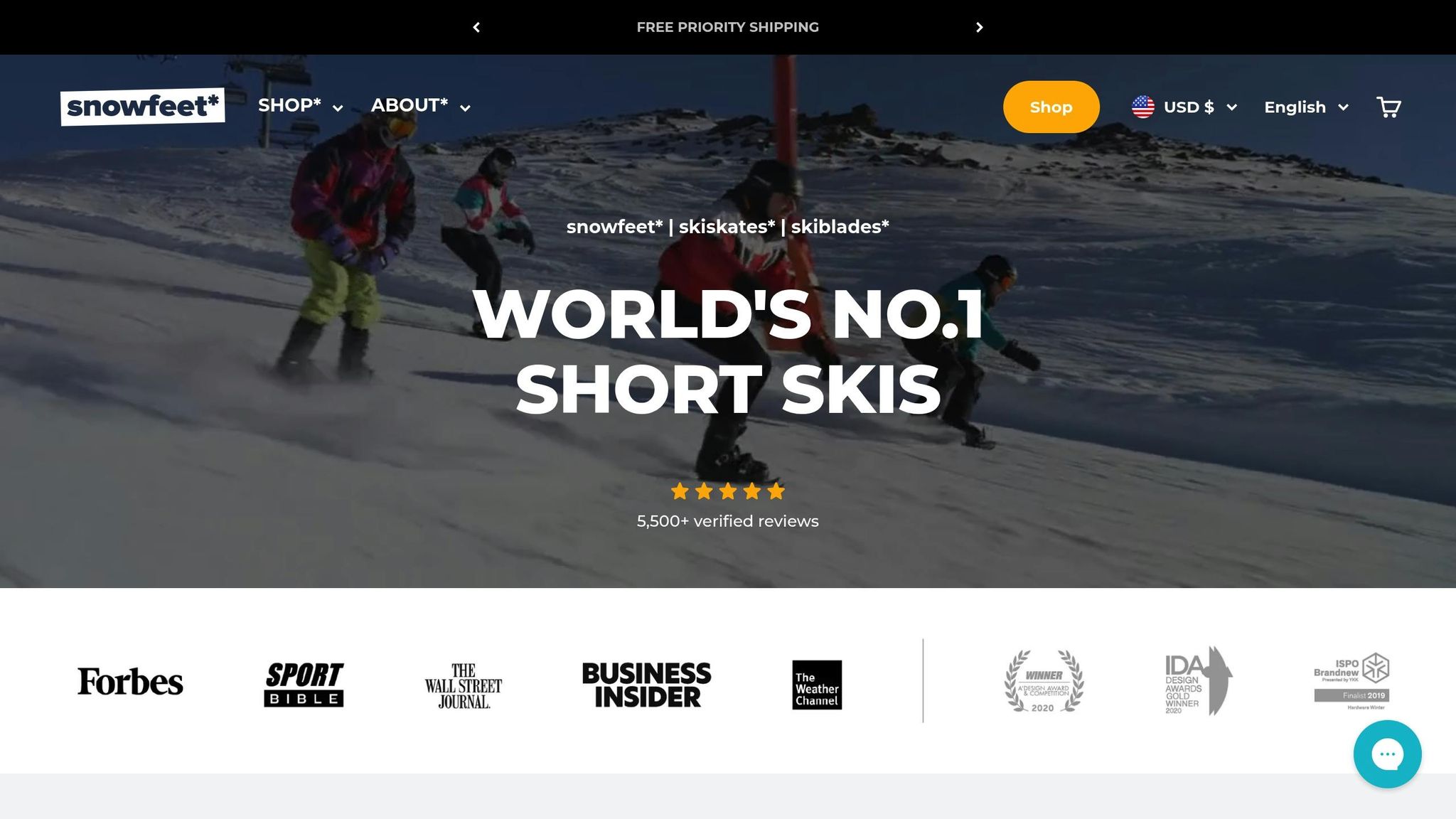
Když porovnáte Snowfeet* vybavení s tradičním lyžařským vybavením, výhody na cestách jsou jasné. Tradiční lyže jsou dlouhé, objemné a těžkopádné na přenášení, zvlášť na letištích. Snowfeet* to mění kompaktními, cestovatelsky přívětivými designy, které zimní sporty dělají mnohem snazšími na cestování. Tady je důvod, proč jsou snem každého cestovatele.
Malá velikost a nízká hmotnost
Pojďme mluvit o velikosti. Tradiční lyže jsou obvykle dlouhé 63–75 palců (160–190 cm), což není zrovna praktické. Vybavení Snowfeet* je naopak osvěžující kompaktní. Jejich Mini Ski Skates jsou jen 15 palců (38 cm) a i jejich Short Skis mají maximálně 47 palců (120 cm). To je obrovský rozdíl.
Menší velikost znamená, že nejsou jen snadno přenosné – jsou také snadno zabalitelné. Do stejného prostoru, který zabere jeden pár tradičních lyží, se vejde několik párů vybavení Snowfeet*. Představte si rodinu balící se na výlet: místo stresu, jak všechno vměstnat, mohou vzít dostatek vybavení Snowfeet* pro všechny bez potu – a bez překročení váhového limitu letecké společnosti.
Ušetřete na poplatcích za zavazadla
Další bonus: žádné přemrštěné poplatky za zavazadla. Letecké společnosti rády účtují příplatky za nadměrné lyžařské vybavení a tyto poplatky se opravdu mohou nasčítat. Ale produkty Snowfeet* jsou dostatečně kompaktní, aby se vešly do vašeho běžného zavazadla. To znamená žádné poplatky za nadměrná zavazadla, což vám ušetří pěknou částku – zvlášť pokud často cestujete nebo s větší skupinou. Během sezóny se tyto úspory opravdu nasčítají.
Funguje s různými typy bot
Snowfeet* vám nejen ušetří místo a peníze – také zjednodušuje váš seznam věcí k zabalení. Jejich vybavení je navrženo tak, aby fungovalo s botami, které už vlastníte. Ať už máte zimní boty, turistické boty nebo dokonce pevné tenisky, jste připraveni vyrazit. Nemusíte tahat těžké lyžařské boty.
To není všechno. Produkty Snowfeet* jsou také kompatibilní se snowboardovými botami a tradičními lyžařskými botami, což vám dává flexibilitu kombinovat podle vašich plánů. Můžete si vzít své běžné zimní boty do letadla a pak vyrazit na svah se Snowfeet* vybavením – bez nutnosti dalšího balení. Zkuste to udělat s tradičními dlouhými lyžemi od značek jako Blizzard nebo Elan. Spoiler: nemůžete. Snowfeet* usnadňuje cestování s lehkým zavazadlem a přitom si užít všechny své oblíbené zimní aktivity.
Jak zabalit více párů lyží
Cestování s více páry vybavení Snowfeet* nemusí být složité. S trochou plánování a správnými balicími technikami můžete vše bezpečně přepravit, dodržet limity aerolinek a vyhnout se zbytečným komplikacím. Tady je návod, jak na to.
Vyberte správné zavazadlo
Typ zavazadla, které používáte, hraje velkou roli v efektivním balení. velký kufr na kolečkách je solidní volba. Zaměřte se na tvrdý kufr blízký 62 lineárním palcům (délka + šířka + výška), které většina amerických aerolinek povoluje pro odbavená zavazadla. Tyto kufry nabízejí dostatek prostoru a zároveň splňují velikostní omezení aerolinek.
Například 29palcový tvrdý kufr (29" x 20" x 12", celkem 61 lineárních palců) snadno pojme až tři páry Snowfeet* Mini Ski Skates spolu s vaším oblečením. To je velká výhoda oproti tradičním lyžím, které obvykle vyžadují samostatný lyžařský vak jen pro jeden pár.
Pokud cestujete s delším vybavením Snowfeet*, jako jsou 120 cm Short Skis, je lepší volbou polstrovaný lyžařský vak. Tyto vaky pojmou nejen více párů kratších produktů Snowfeet*, ale také poskytují extra polstrování, které chrání vaše vybavení před hrubým zacházením během přepravy.
Při balení mějte na paměti limit hmotnosti 50 liber. Pevné kufry jsou odolnější, ale těžší, často váží 10–12 liber prázdné. To vám nechává asi 38–40 liber na vybavení a oblečení. Chytré balení vám pomůže co nejlépe využít dostupný prostor.
Maximalizujte prostor pomocí balicích pomůcek
Jakmile vyberete správnou tašku, je čas balit efektivně. Komprimační balicí kostky jsou záchranou pro organizaci oblečení a vybavení Snowfeet*. Tyto kostky se zipem stlačí vaše věci a uvolní místo pro další nezbytnosti.
Pro lepší ochranu zabalte každý pár vybavení Snowfeet* do polstrovaného návleku nebo obalu. Krátké návleky na lyže jsou pro to ideální a pomáhají předcházet poškrábání nebo poškození vázání.
Vakuové kompresní pytle jsou dalším užitečným nástrojem, zejména pro objemné zimní oblečení. Použijte tyto pytle na bundy, kalhoty a spodní vrstvy. Odstranění vzduchu z pytlů vytvoří další prostor pro vaše vybavení Snowfeet*. Jen pamatujte, že vaše oblečení se po otevření pytlů opět rozepne, takže plánujte s předstihem.
Při balení kufru vrstvěte vybavení promyšleně. Nejdelší předměty, jako jsou 120 cm Short Skis, položte na dno nebo po stranách. Vyplňte mezery menšími páry a oblečení srolujte tak, aby pevně obklopilo vše ostatní. Díky kompaktní velikosti produktů Snowfeet* je tento proces překvapivě zvládnutelný.
Dvakrát zkontrolujte váhu a velikost před odjezdem
Poslední věc, kterou chcete, je být zasaženi neočekávanými poplatky za zavazadla. Zvažte a změřte svůj zabalený kufr doma, abyste zajistili, že nepřekročí 50 liber a limit 62 lineárních palců.
Zkontrolujte si předem pravidla pro zavazadla vaší letecké společnosti. Například Southwest Airlines umožňuje dvě bezplatná odbavená zavazadla, což je skvělé pro rodiny cestující s více páry vybavení Snowfeet*. Naopak letecké společnosti jako Spirit účtují poplatky za všechna odbavená zavazadla, i když splňují požadavky na velikost a váhu.
Pro udržení pořádku si vytvořte balicí seznam, který zahrnuje rozměry a váhy každého produktu Snowfeet*, který s sebou vezete. Odkazujte se na specifikace produktů Snowfeet* pro přesné údaje o položkách jako Mini Ski Skates a Short Skis. Tento dodatečný krok vám může ušetřit nepříjemná překvapení na poslední chvíli.
Pokud cestujete s hodně vybavením, zvažte zaslání části předem. Služby jako UPS nebo FedEx často nabízejí cenově výhodnější možnosti pozemní přepravy, zejména na delší cesty, kde není nutné okamžité doručení. To může být chytrý způsob, jak se vyhnout vysokým poplatkům za nadváhu zavazadel.
sbb-itb-17ade95
Snowfeet* vs běžné lyže a snowboardy pro cestování
Pojďme se podívat, jak si vybavení Snowfeet* stojí ve srovnání s tradičními lyžemi a snowboardy, zejména pokud jde o cestování. Jednou z výrazných vlastností produktů Snowfeet* je jejich kompaktní velikost a lehký design. Na rozdíl od tradičních lyží, které jsou obvykle dlouhé 59–71 palců, nebo snowboardů v rozmezí 55–65 palců, je vybavení Snowfeet* mnohem menší – od pouhých 15 palců (Mini Ski Skates) po 47 palců (Short Skis). To znamená, že se snadno vejdou do standardního kufru nebo dokonce batohu, což vám ušetří nepříjemné poplatky za nadměrnou zavazadla.
Zde je rychlé porovnání vedle sebe s ohledem na cestovní vlastnosti:
| Faktor | Tradiční lyže/snowboardy | Produkty Snowfeet* |
|---|---|---|
| Délka | 59–71 palců (lyže), 55–65 palců (snowboardy) | 15–47 palců* |
| Hmotnost | Těžší a objemnější | Mnohem lehčí |
| Přenosnost | Vyžaduje nadměrné zavazadlo | Vejde se do batohů nebo příručních zavazadel |
| Kompatibilita bot | Pouze specifické lyžařské nebo snowboardové boty | Funguje s zimní obuví, lyžařskými botami nebo snowboardovými botami |
*Rozměry jsou přibližné a závisí na konkrétním modelu.
Díky svému kompaktnímu designu a všestrannosti usnadňuje vybavení Snowfeet* cestování za zimními sporty - a také je levnější. Už žádné tahání objemných zavazadel nebo starosti s umístěním vybavení do stísněných prostor. Je to výhra pro každého, kdo chce mít zimní dobrodružství bez starostí.
Tipy pro snadné cestování s lyžemi
Cestování s vaším vybavením Snowfeet* je hračka ve srovnání s taháním tradičních lyží. Díky kompaktní velikosti se vybavení Snowfeet* pohodlně vejde do standardního zavazadla. Aby jste z této výhody vytěžili maximum, stojí za to předem zkontrolovat pravidla leteckých společností.
Vyberte letecké společnosti s flexibilními pravidly pro zavazadla
Při rezervaci letu hledejte letecké společnosti, které nabízejí rozumné limity na zavazadla pro sportovní vybavení. Vzhledem k tomu, že většina modelů Snowfeet* se vejde do běžného zavazadla, často se můžete vyhnout dodatečným poplatkům, které obvykle přicházejí s nadměrným lyžařským vybavením. Další tip? Rezervace přímo přes leteckou společnost může usnadnit správu detailů zavazadel a vyhnout se nepříjemným překvapením.
Chraňte své vybavení během cestování
Aby vaše vybavení Snowfeet* zůstalo během přepravy v perfektním stavu, zvažte jeho zabalení do speciálního lyžařského vaku. Alternativně může skvělou ochranu poskytnout odolný kufr s tvrdým pláštěm, vzhledem k tomu, jak kompaktní jsou produkty Snowfeet*. Nezapomeňte svůj vak zabezpečit zámky schválenými TSA pro větší klid na duši.
Pro extra ochranu zvažte pořízení pojištění půjčeného vybavení. Může vás chránit v případě ztráty nebo poškození. Pořízení několika fotografií vaší výbavy před cestou je chytrý krok pro pojistné nároky a přinést si malou opravárenskou sadu vám pomůže zvládnout drobné opravy na cestách.
Zodpovězte otázky resortu ohledně vaší výbavy
Pokud personál resortu nebude jistý vaším vybavením, buďte připraveni vysvětlit, jak produkty Snowfeet* fungují. Jsou všestranné a bezpečné, dobře fungují na všech typech terénu – od upravených svahů po prašan. Můžete také upozornit, že jejich kratší délka snižuje riziko nehod při vysokých rychlostech a tím i riziko kolizí.
Než vyrazíte, je dobré zkontrolovat pravidla vybavení v resortu. Přinést si specifikace produktů ze stránek Snowfeet* může pomoci vyjasnit případné nejasnosti. Spojení s ostatními uživateli krátkých lyží vám také může přinést užitečné tipy o resortu.
Se Snowfeet* se cestování a sjíždění svahů stává hladším a příjemnějším zážitkem. Jejich kompaktní a obratný design nejen zjednodušuje vaši cestu, ale také vám umožňuje snadno předvést své dovednosti.
Cestujte lépe se Snowfeet*
Pokud jste snili o bezstresových lyžařských výletech, Snowfeet* by mohl být váš nový cestovní parťák. Jejich kompaktní a lehká výbava mění pravidla hry a dělá z objemného zavazadla minulost.
Vezměte si například jejich 120 cm Short Skis nebo 15palcové Mini Ski Skates. Ty se pohodlně vejdou do batohu, což znamená žádné objemné lyžařské tašky ani další poplatky u leteckých společností. Méně starostí, více zábavy. Navíc lehký design usnadňuje pohyb na letištích – žádné tahání těžkého vybavení přes přeplněné terminály.
Další výhoda? Výbava Snowfeet* funguje s vašimi běžnými zimními botami. Není potřeba žádných dalších doplňků, což ještě více usnadňuje balení. Ať už vyrážíte na rychlou jízdu s 44 cm Skiskates nebo zdoláváte celý kopec s 99 cm Skiblades, Snowfeet* vás nezklame.
Zajímá vás cena? Modely začínají na 150 USD, přičemž prémiové možnosti dosahují až 690 USD. Navštivte Snowfeetstore, kde si můžete prohlédnout kompletní nabídku a sestavit si cestovní lyžařskou výbavu, která odpovídá vašemu stylu.
Se Snowfeet* můžete balit lehce, cestovat chytře a vyrazit na svahy bez problémů. Lyžování, které je jednoduché.
Často kladené otázky
Jak si vybavení Snowfeet vede ve srovnání s tradičními lyžemi?
Vybavení Snowfeet je lehké, přenosné a velmi snadno použitelné, což z něj dělá skvělou volbu pro začátečníky a rekreační lyžaře. Na rozdíl od tradičních lyží lze produkty Snowfeet - jako Snowfeet PRO (měřící pouhých 50 cm) - používat s běžnými zimními botami. To znamená méně starostí, rychlejší učení a spoustu zábavy na upravených svazích nebo lehkém prašanu.
A co tradiční lyže? Jsou volbou pro vysokou rychlost, stabilitu a zvládání strmého či technického terénu. Ale buďme upřímní - jsou objemnější a nejsou zrovna cestovatelsky přívětivé. Vybavení Snowfeet je naopak ideální pro ty, kteří chtějí obratnost, ostré zatáčky a kompaktní, cenově dostupnou možnost pro rekreační lyžování. Nicméně pokud jste pokročilý lyžař, který hledá maximální výkon na náročných svazích, tradiční lyže jsou stále tou nejlepší volbou.
Lze vybavení Snowfeet používat na různých typech sněhu a jak si vede v různých podmínkách?
Vybavení Snowfeet, jako jsou Skiskates a Skiblades, je navrženo tak, aby zvládlo různé sněhové podmínky. Tyto kompaktní, lehké alternativy k tradičním lyžím fungují nejlépe na upravených svazích, tvrdém sněhu a lehkém prašanu. Nicméně nejsou nejlepší volbou pro hluboký prašan nebo velmi zledovatělý terén.
Jejich malá velikost a chytrý design je dělají super snadno ovladatelnými, což je skvělé pro ostré zatáčky, zábavné sjezdy nebo dokonce trochu běžeckého lyžování, když jsou podmínky vhodné. Navíc jejich přenosnost je obrovskou výhodou pro cestovatele, kteří chtějí balit lehce, ale přesto si užít spoustu zábavy na svazích.
Jak mohu udržet své vybavení Snowfeet v perfektním stavu pro roky cestování?
Abyste udrželi své vybavení Snowfeet v perfektním stavu a připravené k akci sezónu co sezónu, vyzkoušejte tyto jednoduché tipy na údržbu:
- Voskujte skluznici každých 4–6 použití. To udržuje vaše vybavení hladce klouzat a pomáhá předcházet opotřebení.
- Ostřete hrany pomocí brousku, když začnou být tupé. Ostré hrany znamenají lepší kontrolu a výkon.
- Čistěte své vybavení po každém použití. Špína a nečistoty mohou způsobit poškození, pokud se neodstraní, takže rychlé otření hodně pomůže.
- Pro mimo sezónní skladování naneste ochrannou vrstvu vosku a uložte své vybavení na chladné, suché místo. To pomáhá předcházet korozi a udržuje vše v perfektním stavu.
Trocha péče dělá hodně - vaše vybavení Snowfeet zůstane spolehlivé a připravené na další dobrodružství!
Související blogové příspěvky
- Jak bezpečně přepravovat lyže: nosiče na auto, tašky a umístění uvnitř
- Létání se Skiskates [2025]: pravidla leteckých společností, poplatky a tipy na balení
- Létání se Skiskates v roce 2025: aktualizovaná pravidla leteckých společností, poplatky a tipy na balení
- Jak vybrat správnou lyžařskou tašku pro leteckou dopravu (jednoduchá vs. dvojitá, kolečka)





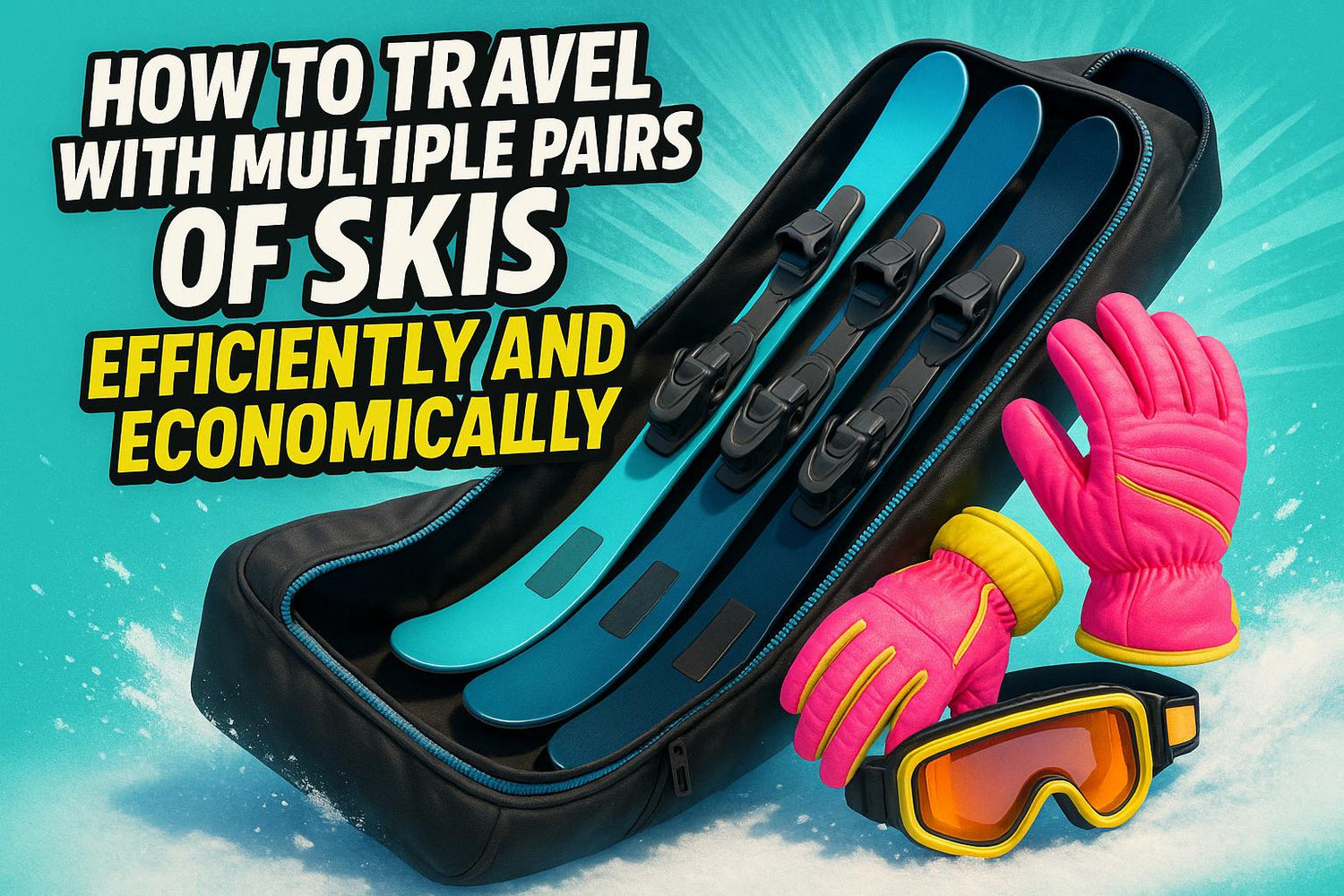
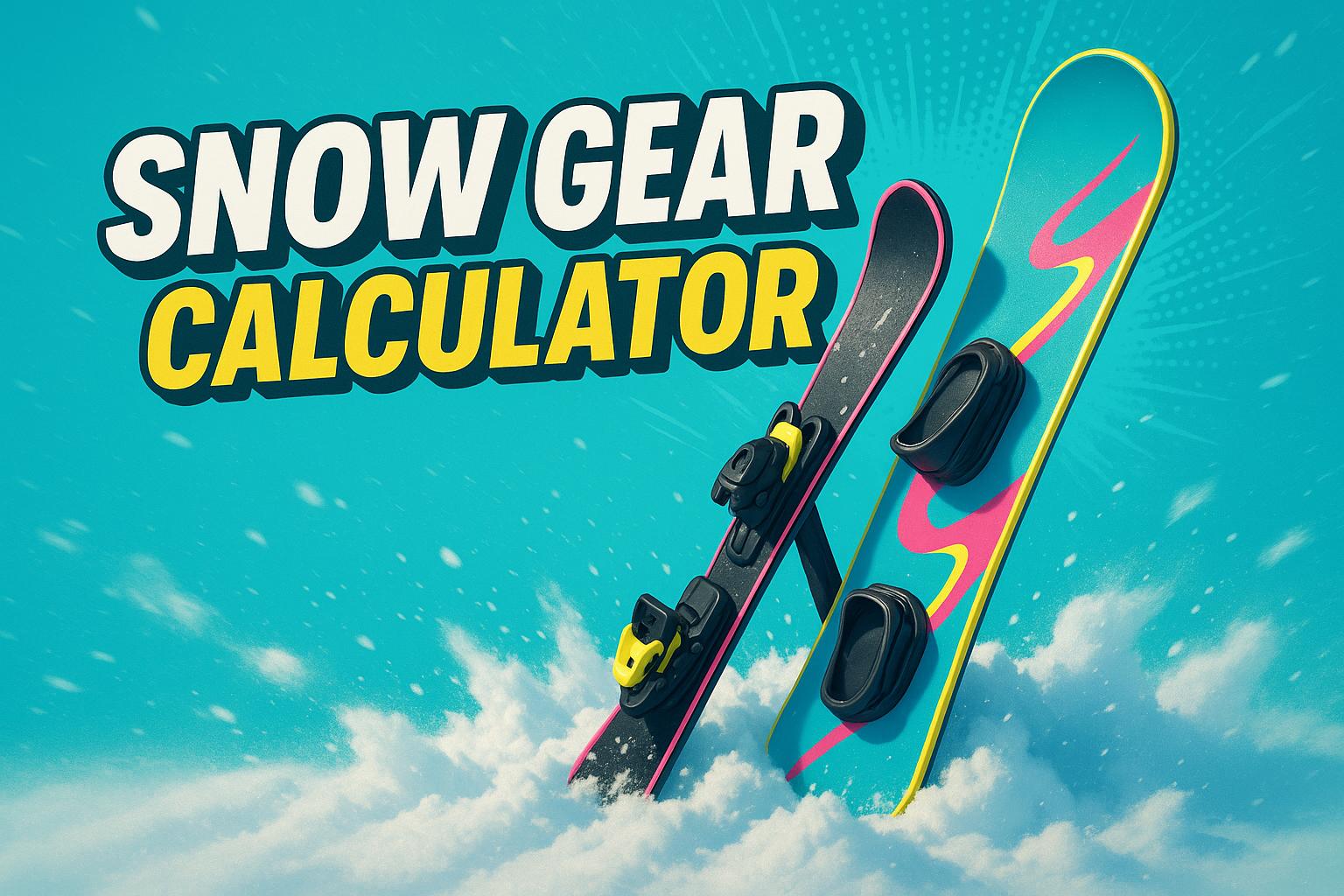
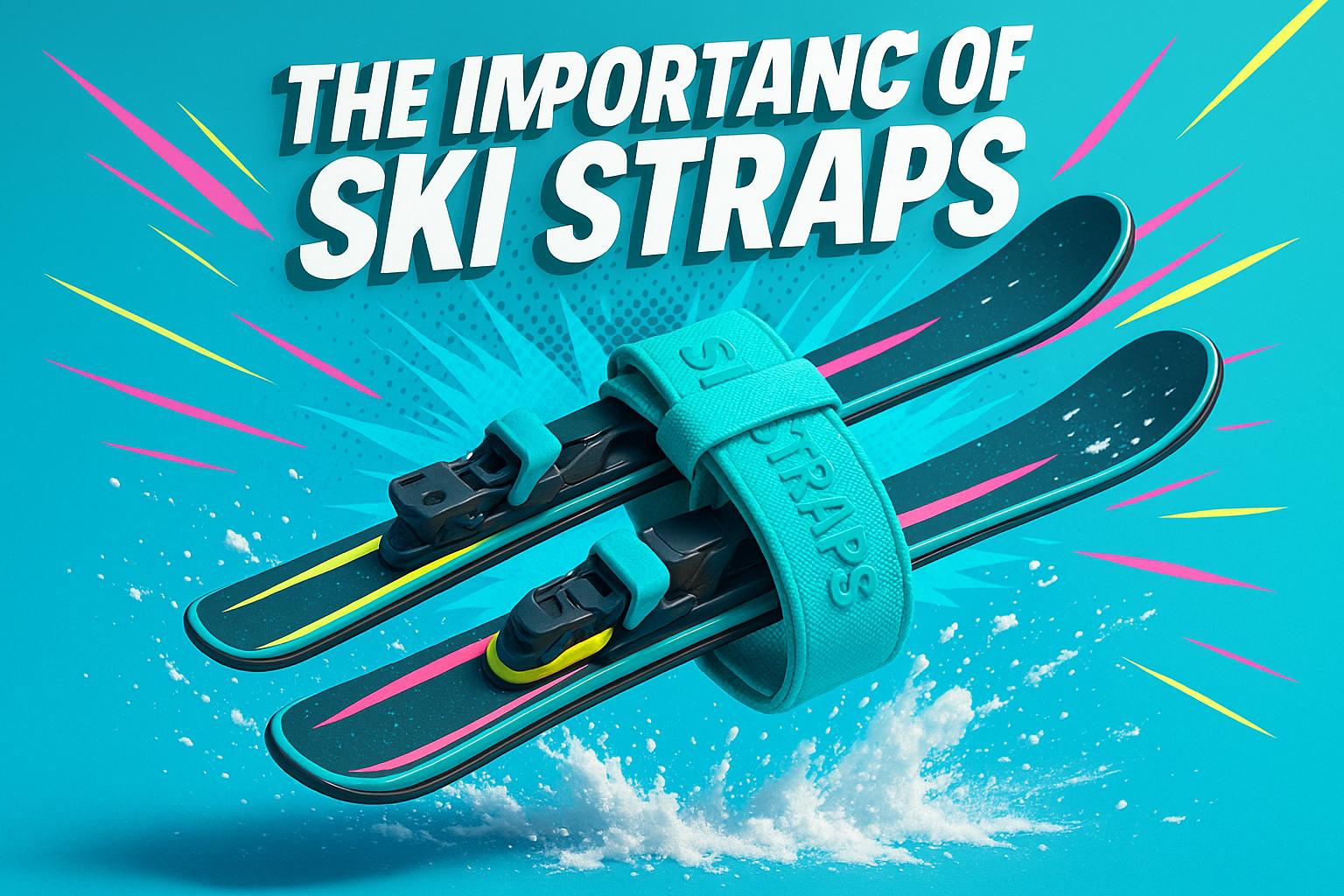

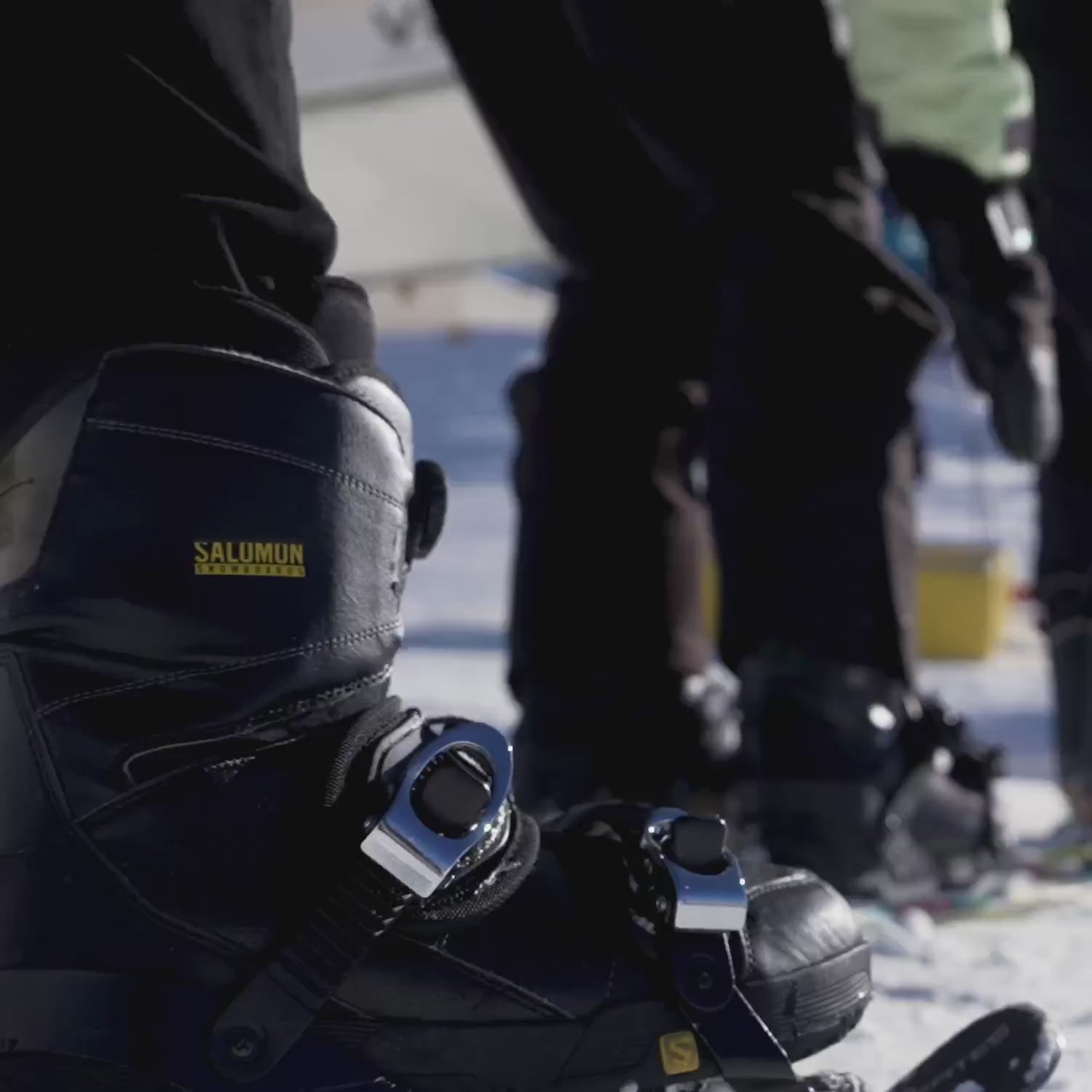

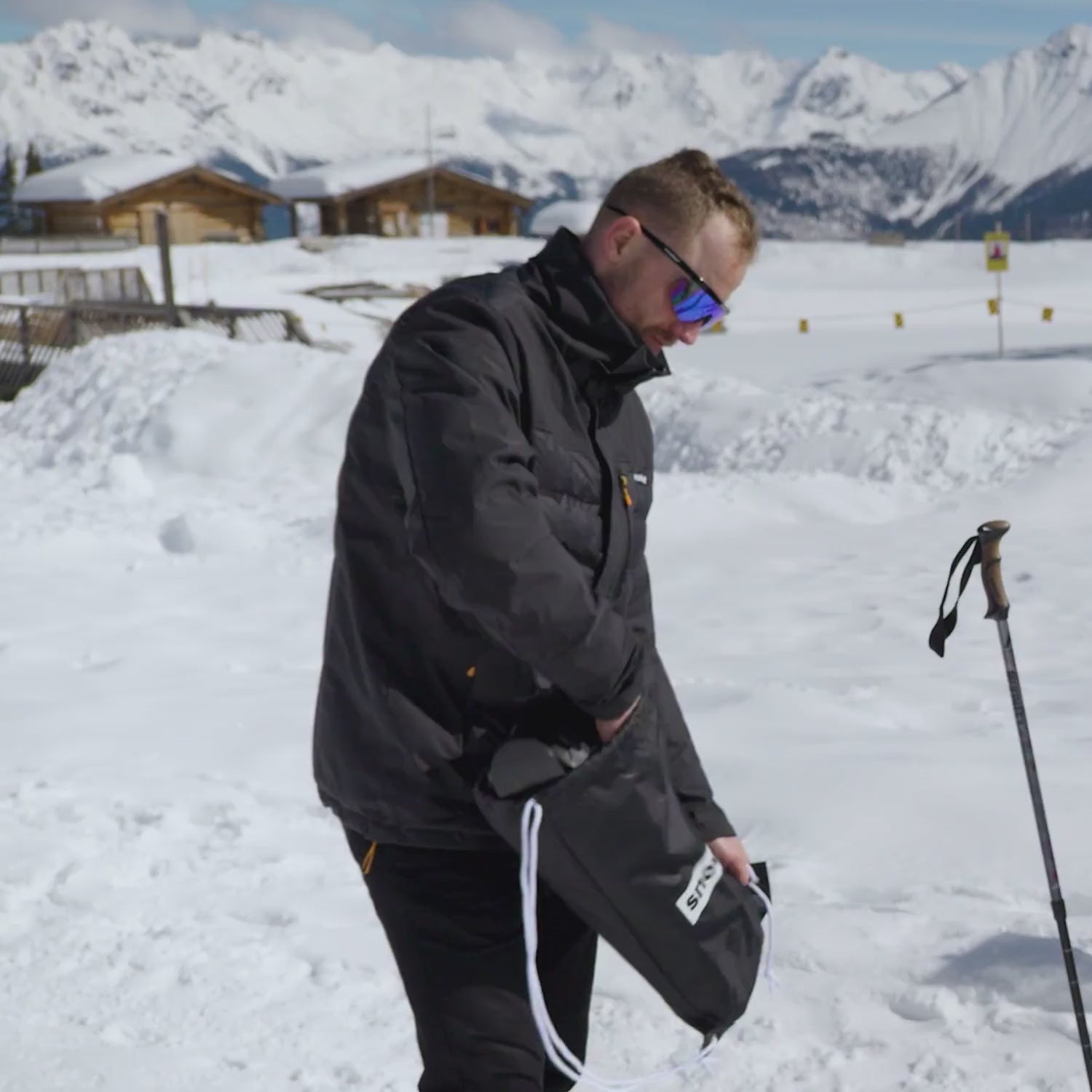
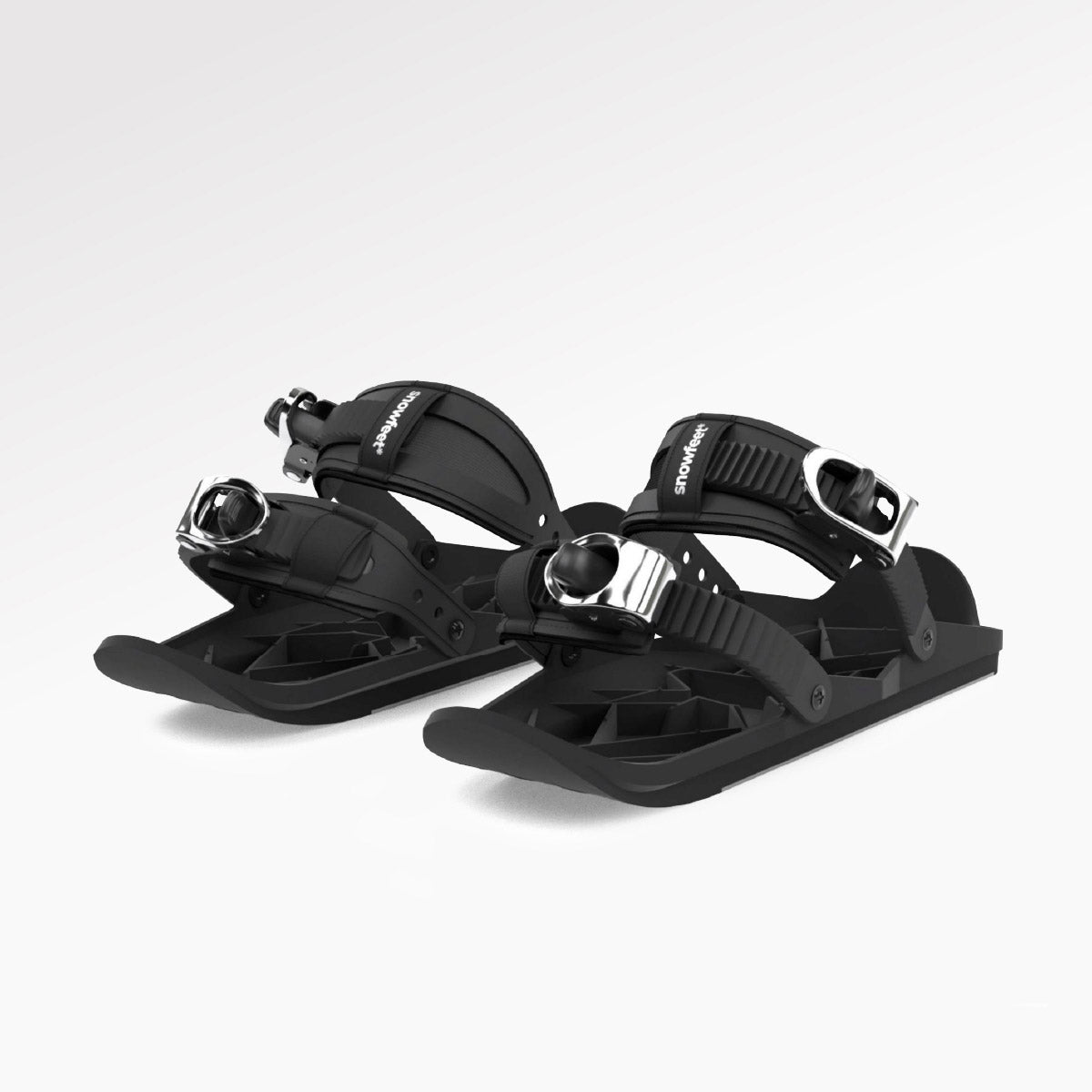
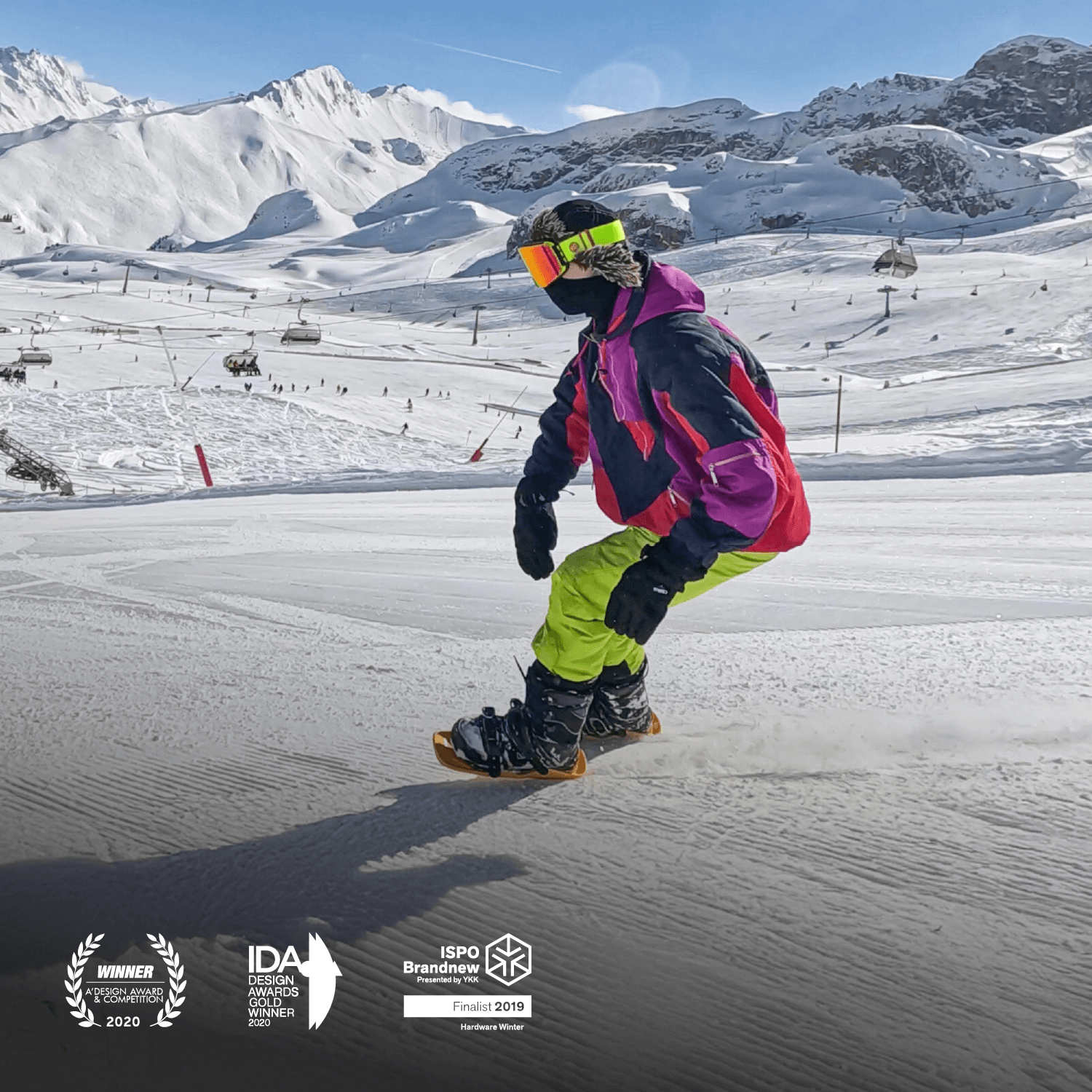
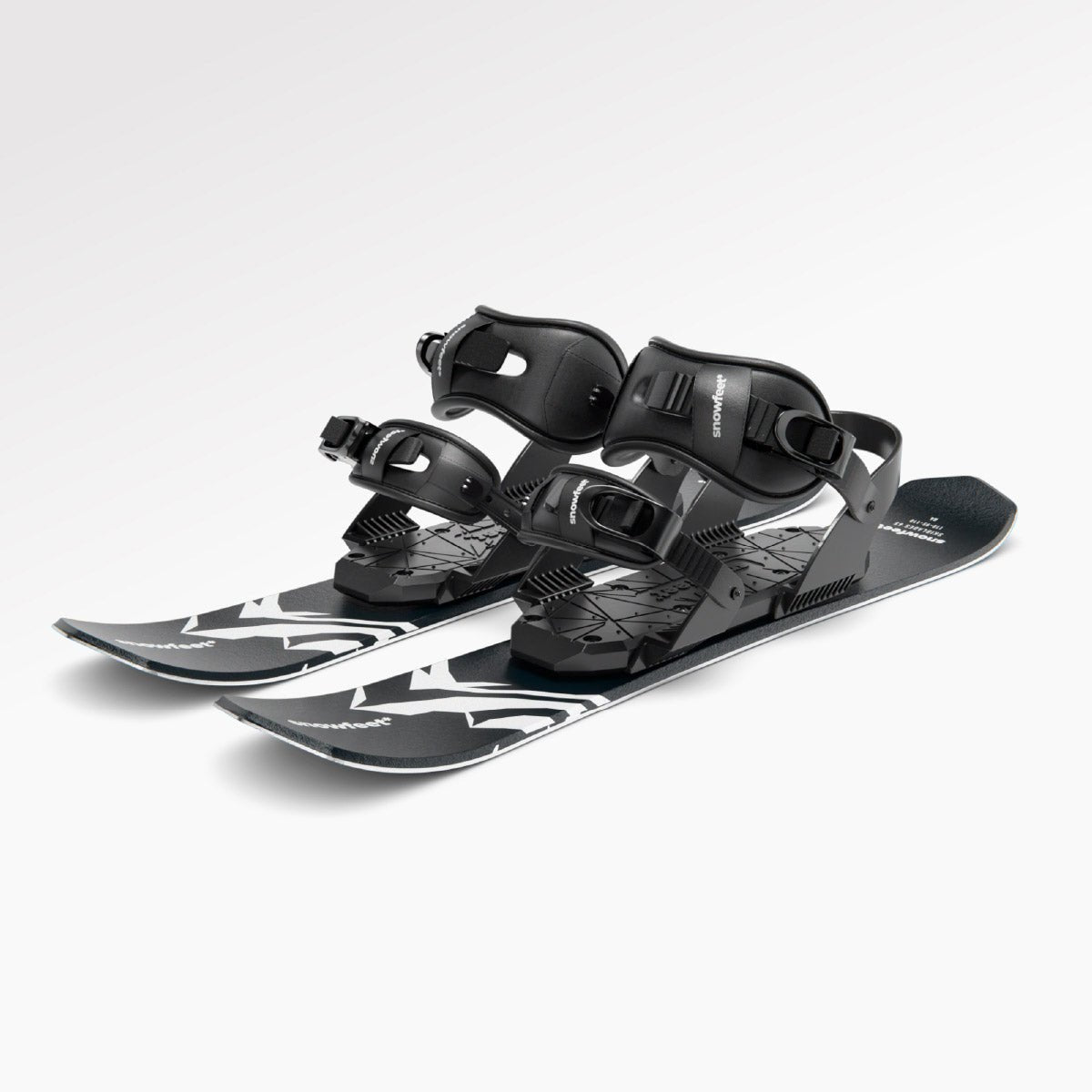
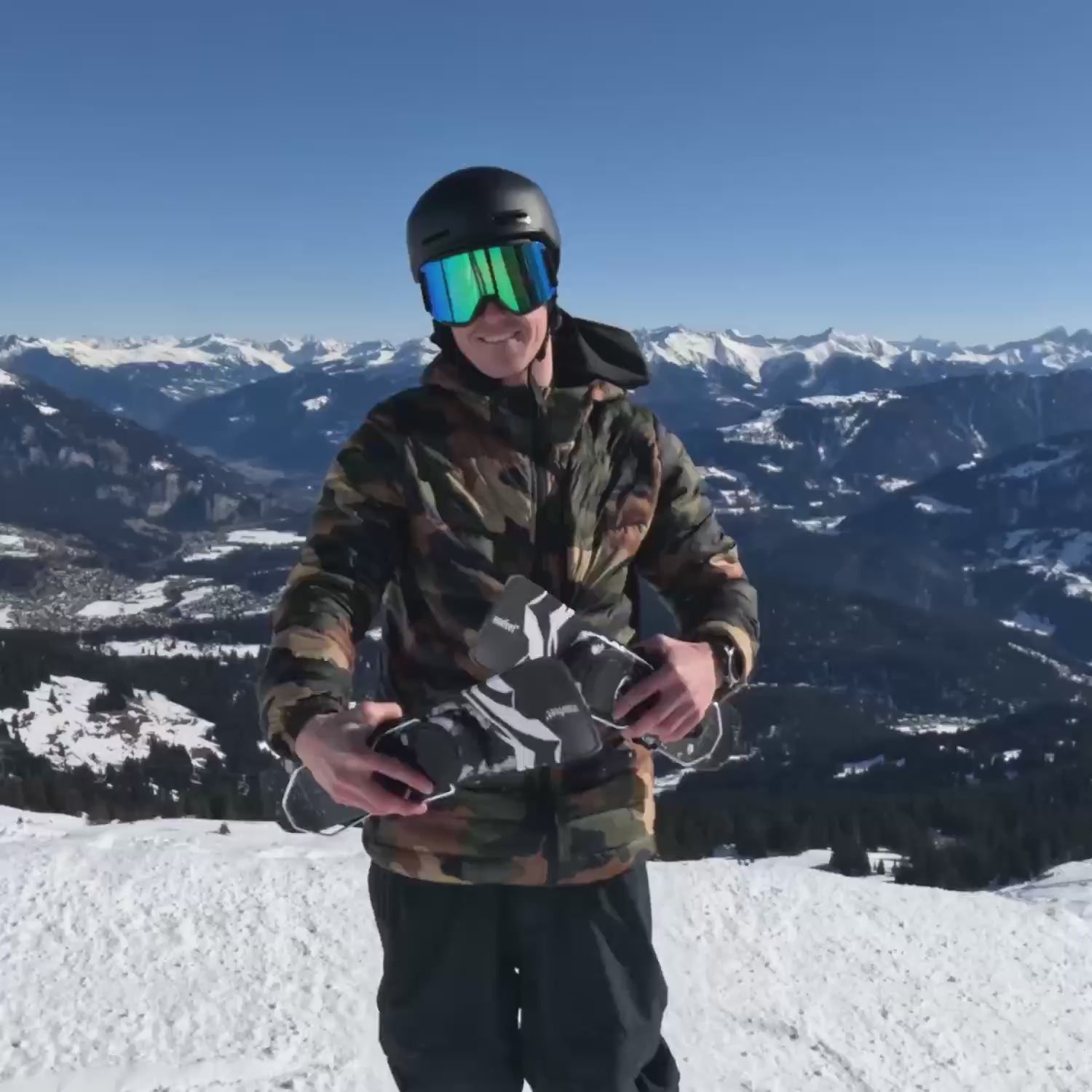
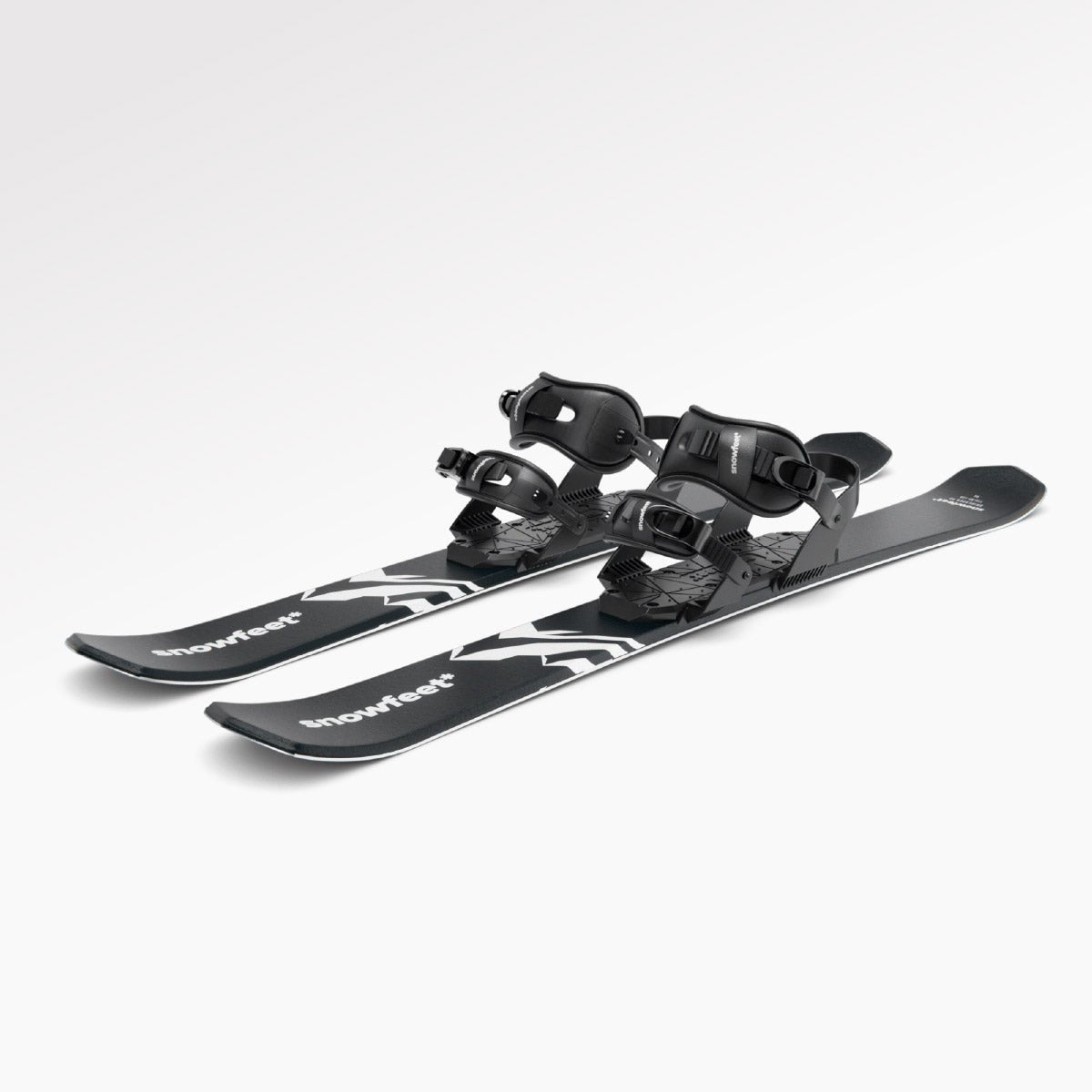
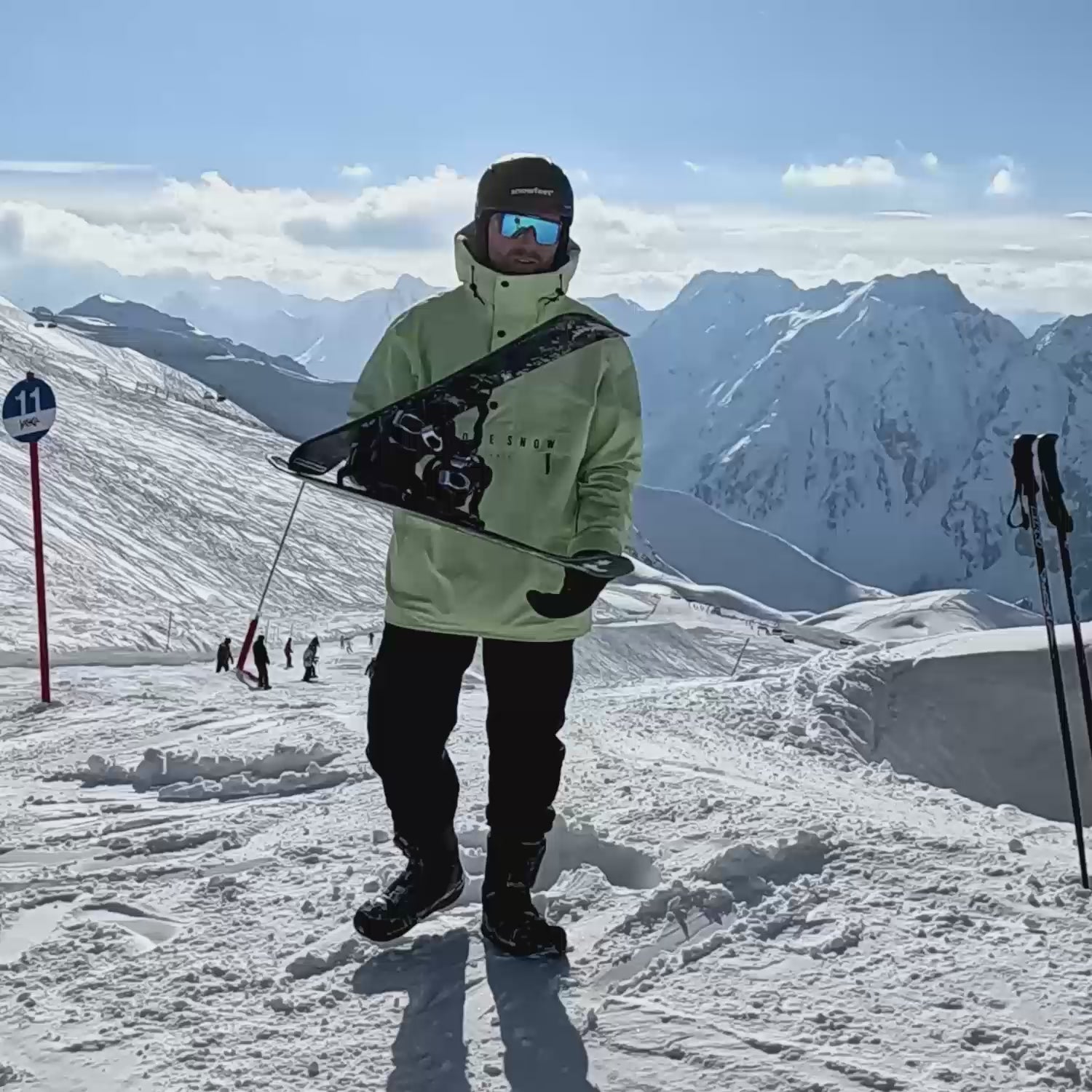
Zanechte komentář
Tento web je chráněn službou hCaptcha a vztahují se na něj Zásady ochrany osobních údajů a Podmínky služby společnosti hCaptcha.